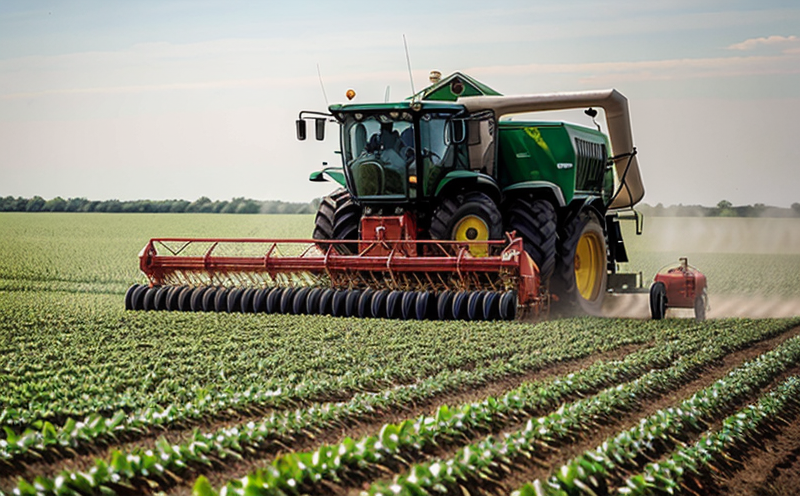The testing of pod/spikelet density is a critical component in understanding crop yield and productivity. This service is designed to provide accurate, reliable, and actionable data on the number of pods or spikelets per unit area within agricultural crops such as cereals (wheat, barley), pulses (beans, lentils), and oilseeds (sunflower, rapeseed).
In essence, pod/spikelet density testing helps in assessing the health and vigor of a plant’s reproductive organs. This information is invaluable for breeders, agronomists, and researchers looking to optimize crop management practices or develop new varieties with enhanced yield potential.
The methodology involves collecting samples from representative fields, ensuring that these samples are taken at different stages of growth when pod development has reached a critical point. These samples are then analyzed using advanced imaging techniques such as X-ray computed tomography (CT) scans to count the number of pods or spikelets within each sample.
The test parameters include:
- Sample size
- Growth stage of the crop
- Type and variety of the crop
- Environmental conditions during sampling
Specimen preparation typically involves:
- Selection of representative samples from various parts of the field.
- Careful handling to avoid damage or contamination of the pods/spikelets.
The instrumentation used in this testing includes advanced imaging systems capable of capturing high-resolution images necessary for accurate pod/spikelet count. The process is governed by international standards such as ISO 17392, which specifies methods for the determination of grain yield.
Reporting involves generating detailed reports that include:
- A summary of sampling methodology
- Listings of pod/spikelet counts per sample
- Analyses of average pod density across different samples
- Potential impact on yield based on observed densities.
The results from this testing can be used by various stakeholders including:
- Breeders to select for traits that enhance pod formation and distribution.
- Agronomists to recommend optimal planting density or fertilizer application rates.
- Researchers to investigate the genetic basis of pod development.
Why It Matters
The importance of pod/spikelet density testing cannot be overstated. Accurate assessment of pod density is essential for maximizing crop yield and ensuring product quality. By identifying areas where pod formation is suboptimal, farmers can implement targeted interventions such as irrigation or nutrient management to improve overall productivity.
From a broader perspective, understanding pod density helps in addressing global food security challenges by providing insights into how different environmental factors influence crop performance. This knowledge is crucial for developing drought-resistant varieties and optimizing resource use efficiency.
Quality and Reliability Assurance
The quality and reliability of pod/spikelet density testing are ensured through adherence to strict protocols outlined in international standards such as ISO 17392. These protocols cover everything from sample selection to image acquisition techniques, ensuring consistency across different test environments.
- Proper training of personnel involved in field sampling and laboratory analysis.
- Use of calibrated equipment for accurate measurements.
- Regular calibration checks on all testing instruments.
- Data validation procedures to ensure accuracy and reproducibility.
Competitive Advantage and Market Impact
The ability to accurately measure pod/spikelet density provides a significant competitive advantage in the agricultural sector. Farmers who can optimize their crop yields through informed decisions based on these tests are better positioned to compete in both domestic and international markets.
- Improved market competitiveness by producing high-quality crops consistently.
- Potential for premium pricing of enhanced yield crops.
- Innovation in crop breeding programs leading to new varieties with superior characteristics.
- Enhanced reputation among consumers who value sustainability and quality.





